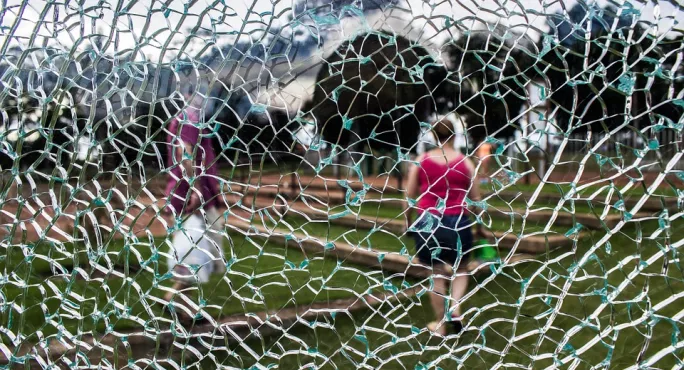- Home
- ‘The difference between hope and hopelessness is one person’
‘The difference between hope and hopelessness is one person’

A grassroots movement in Scottish education is leading the way on tackling the impact of trauma on children’s life chances, according to a leading psychologist.
Speaking at the Portobello Learning Festival in Edinburgh yesterday, Dr Suzanne Zeedyk from the University of Dundee said that across the UK, people are now interested in adverse childhood experiences (ACEs).
“But it is only in Scotland that we have a grassroots movement going on,” she said. “Government policy is important, but if you need culture change, which is really what growing kindness is about, governments can’t grow kindness - we can.”
Dr Zeedyk said Government priorities like the Scottish Attainment Challenge, which aims to improve the attainment of disadvantaged pupils, would be doomed to fail unless the impact of trauma on children was considered.
Education as a driver
Adverse childhood experiences, such as poverty, emotional, physical or sexual abuse or parental divorce, could lead to disrupted neurological development, she explained, which then in turn lead to more risk-taking behaviours, and even early death.
Referring to a study on the prevalence of ACEs in the United States of America, published in 1998, she said: “We had 20 years of knowing this stuff, but we have not put that into our procedures. That is 20 years of children’s pain.”
She explained the film Resilience, the biology of stress and the science of hope had been part of the reason behind the growing interest in this issue from education professionals in Scotland. “My guess is about 30,000 people have now seen this film.” She said most of the original audience had been from the education sector. “Education is driving this in Scotland, it is not health.”
What is it like
She urged teachers to try to imagine themselves in those children’s shoes. “If you are willing and able to think about what it is like to have four or more of those experiences, you are serving our children. It is feeling it that allows you to work out what to do next.”
“If they don’t experience it at home, the next place most children experience safety and kindness is school. Unless they don’t,” said Zeedyk, adding this was something all teachers should also consider when dealing with behaviours commonly described as “challenging”: “We have got to come to see children’s crying not as resistence, but as a call for help.”
Some schools across Scotland had already taken “brave” steps towards tackling this, for example by speaking of “distressed behaviour” rather “challenging behaviours”, introducing mindfulness or abolishing behaviour charts.
‘A culture of kindness’
Also speaking at the event, education consultant David Cameron agreed there was “something really important” happening in Scotland. “There is a recognition that a lot of the young people whose attainment we are charged with raising have great barriers to their learning. We can’t change the resourcing, so we need to create a culture of care and a culture of kindness.”
And Ruth McKay, headteacher at Portobello High School, which hosted the conference, said: “I think teachers and others want to hear those stories and what to know what they can do for young people affected by those issues. This is just to so important, and it makes such a difference.”
Speaking of her own traumatic childhood, Jaz Ampaw-Farr said it had been a teacher that has changed her life, simply by giving her a feeling of belonging. Teachers were wrong to think they were unable to affect a situation largely taking place outside the school boundaries, she said, and in her case, the kindness of one teacher in particular had stayed with her for years after she left the school. “The difference you are making is not measured in a set of graders, it is what happens when you are not even in the room,” she said.
Steps teachers can take
And Chris Kilkenny, whose childhood had been severely affected by his mother’s drug abuse and poverty, said Scotland’s education secretary John Swinney had “almost” been right when he said last year that the difference between hope and hopelessness was a good education. “The difference between hope and hopelessness is just one person,” he said, adding teachers in seemingly wealthy cities like Edinburgh should not feel their students were not affected by poverty. There were simple steps teachers could take to help young people like him, he said:
- ask yourself if the opportunities you are offering are really free. Try and keep costs as low as possible
- Just ask one young person coming in If they are ok - turn off your “teacher attitude” and just be a human
- Don’t let a young person fade into the back of the classroom
- If a young person is acting up, remember there might be a reason
Keep reading for just £1 per month
You've reached your limit of free articles this month. Subscribe for £1 per month for three months and get:
- Unlimited access to all Tes magazine content
- Exclusive subscriber-only stories
- Award-winning email newsletters



